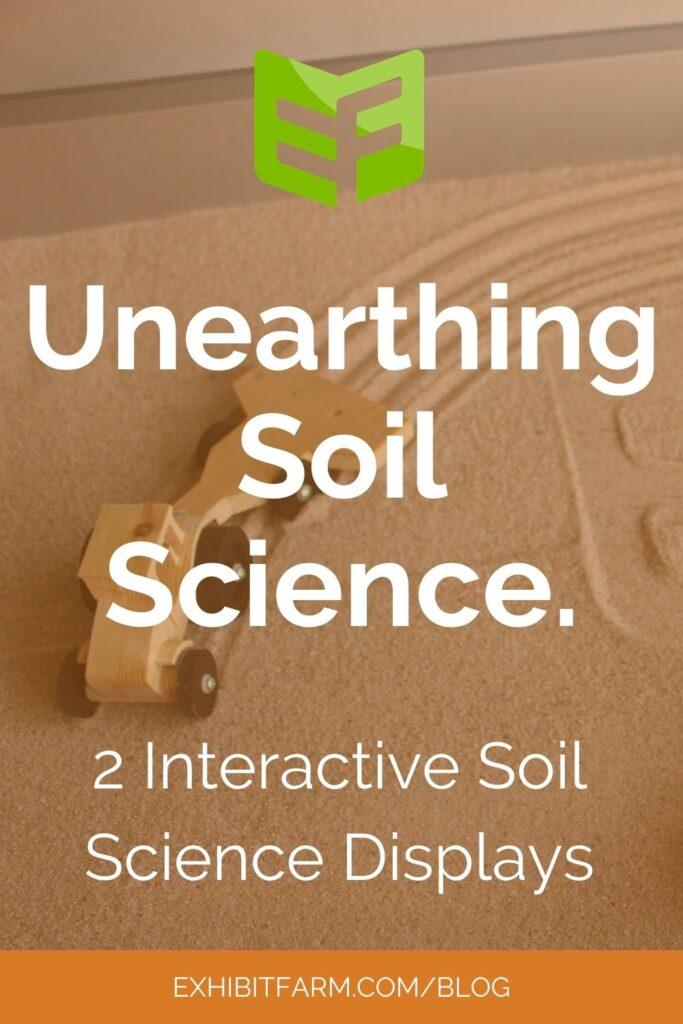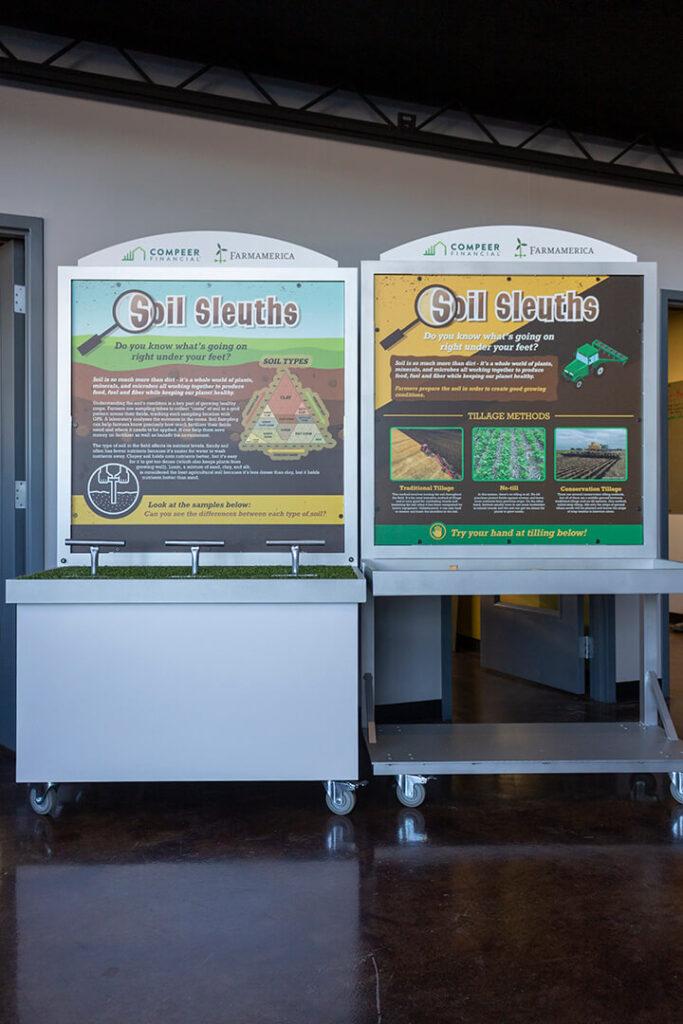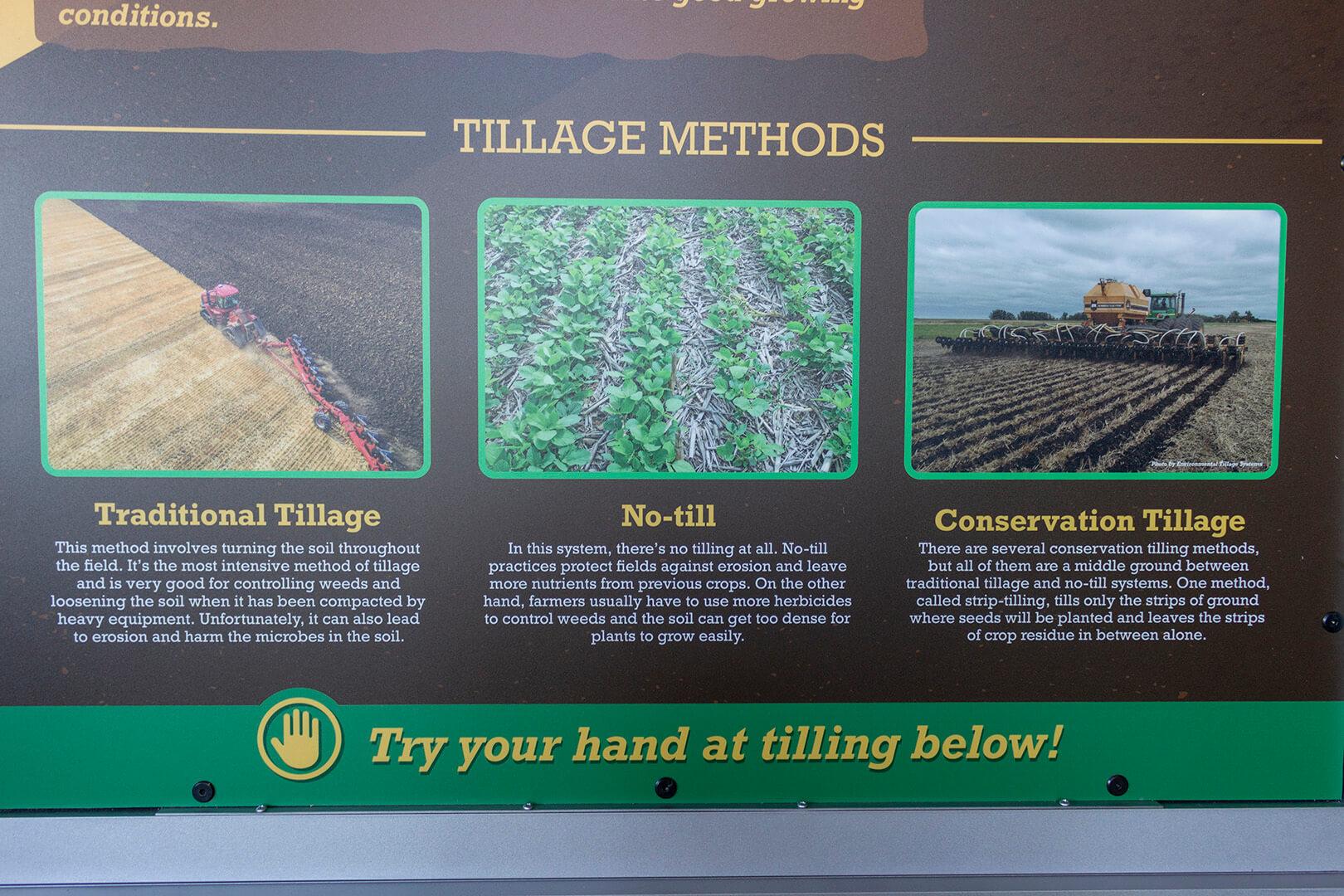
Soil’s kind of like air in some ways. It’s all around us, it’s easy to overlook, but it’s really, really important. Farmers certainly know that, but consumers don’t always consider the relationship between soil science and agriculture. Even fewer recognize how complicated fostering healthy soil can be. And unfortunately, that can contribute to the idea that agriculture is low-tech and environmentally unfriendly.
Enter consumer outreach programs. For groups that want to change those perceptions of farming, soil science is a good place to start. It’s clearly a complex science, and it ties directly to environmental protection.
For example, our clients at Farmamerica, an ag-themed museum and farm experience, asked us to design two interactive displays about soil science that made the technical aspects easier to understand. Because Farmamerica’s audience includes a lot of kids, the interactive aspect was especially important.
To give Farmamerica the most bang for their buck, our craftsmen developed a brand-new display unit. Two trays with interactive elements sit in front of double-sided informational panels, and each unit sits on wheels to make it easy to move. The double-sided panels mean we could fit four displays into two units.
(For close-up photos of each section of the Soil Sleuths displays, see our custom products page.)
Display #1: The Science of Soil Management
One unit explains some different techniques of soil management. When it comes to tilling methods, farmers have a lot of pros and cons to consider. Since traditional tillage can lead to erosion and disrupts the soil microbes’ ecology, it’s easy for non-farmers to assume that no-till systems are clearly better. But many people don’t realize that traditional tillage has its benefits. It helps control weeds without herbicides or prevent certain plant diseases from surviving in the soil.

This first soil science display briefly outlines the different factors farmers have to consider for each method, showing that the decision is far more complex than simply choosing convenience or the environment. It also includes photos to show what traditional tillage, no-till, and conservation tillage look like on the ground. And most importantly, it gives visitors the chance to experiment with “plowing” themselves.
We filled this display’s tray full of sand and included two mini tractors with tillage attachments. One of them has fewer “blades” than the other, so they make different patterns when people drag them through the sand. It’s a way of helping folks experience, as well as visualize, the difference between traditional and conservation tillage.
The back of this unit, meanwhile, bears eight lift-up panels with a fun Q&A about soil science. One, for instances, asks “Where does ‘fresh earth smell’ come from?” (A chemical called geosmin, if you were wondering.)
Display #2: Scientific Soil Sampling
Farmamerica’s second soil science display drew from one of the displays we’d created for Macomb County Farm Bureau’s exhibit trailer. Its tray features three slide-out soil sampling tubes, each with a different kind of artificial soil inside. The information panel explains how scientists classify soil types, from “clay” to “sandy clay” to “clay-ey loam” and so on. Then, visitors can lift one of the tubes to see the differences between three types for themselves.
On the back of this unit, visitors find facts about cover crops and how they help protect the nutrients in the soil. (Or even add nutrients, depending on the cover crop.) People can spin a wheel to discover the steps in the cycle of crop rotation, from cash crop to cover crop and back again. Like the tillage section, this display highlights how farmers can take care of their soil in sustainable ways.
After we shipped the displays to Farmamerica, we emailed them to confirm they’d received them. Our contact wrote back, “I meant to notify you earlier, but we spent the afternoon unboxing and assembling the structures like kids on Christmas morning! We are thrilled with how they turned out, and we are so very excited to share them with our visitors, donors, and members!” Well, that thrilled us too — both because Farmamerica was happy and because now these interactive displays can head out and start introducing soil science to consumers who may never have gotten to hear about it before.
